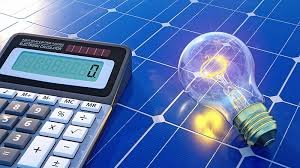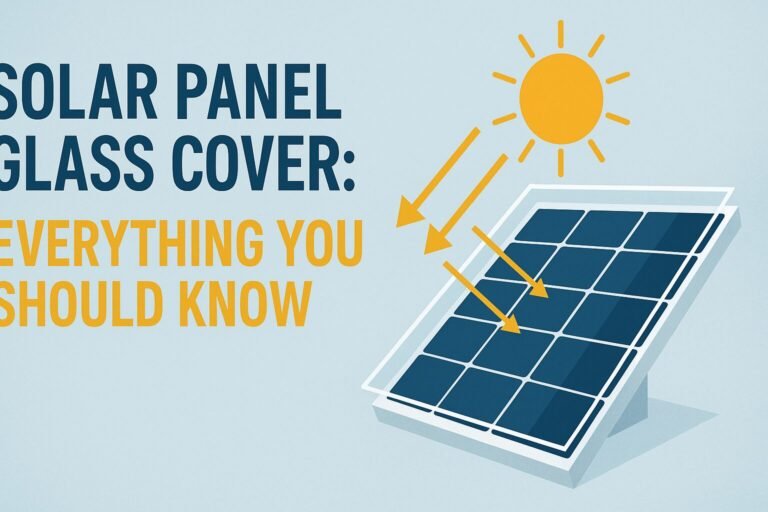
How solar panel charge time calculators work, predict battery charging accurately, and optimize your renewable energy system.
Staring at your battery bank wondering when it’ll finally reach full charge? I’ve been there too. After installing my first off-grid solar setup at my mountain cabin, I spent countless hours guessing when I’d have enough power for the weekend. That frustration led me down the rabbit hole of solar panel charge time calculations—knowledge I’m excited to share with you today.
Table of Contents
What Exactly Is a Solar Panel Charge Time Calculator?
A solar panel charge time calculator is a practical tool that helps you estimate how long it will take your solar panels to charge batteries or power specific devices. Instead of playing the waiting game or risking running out of power, these calculators give you reliable predictions based on your specific setup.
Why You Need One in Your Solar Journey
Before diving into the technical aspects, let’s consider why these calculators matter:
- They prevent unexpected power shortages
- They help you plan energy usage around available sunlight
- They allow you to right-size your system for your actual needs
- They save money by avoiding unnecessary equipment purchases
As Tom from Arizona told me, “Once I started using a charge time calculator, I stopped overbuying batteries I didn’t need. Saved me nearly $2,000 on my RV setup.”
Key Components That Affect Solar Charging Time

Understanding what goes into a calculation helps you make better decisions. Here’s what matters most:
Solar Panel Output
Your panels’ wattage determines how much electricity they can produce under ideal conditions. Most residential panels range from 250W to 400W, with higher-efficiency models pushing beyond 500W.
Battery Capacity
Battery capacity, expressed in amp-hours (Ah) or watt-hours (Wh), indicates the amount of energy your batteries are able to store. A typical 12V lead-acid deep cycle battery might have 100Ah capacity, while lithium batteries can range from 50Ah to 300Ah or more.
System Efficiency
Nothing in the real world operates at 100% efficiency. Solar systems lose power through:
- Wiring resistance
- Charge controller limitations
- Temperature effects on batteries
- Inverter conversion losses
Most systems operate at 65-85% efficiency, depending on quality and environmental conditions.
Available Sunlight
This factor varies dramatically based on:
- Your geographic location
- Season and time of year
- Weather conditions
- Panel orientation and tilt
The Essential Solar Charging Formula
The basic formula for calculating charge time is:
Charge Time (hours) = (Battery Capacity × Depth of Discharge) ÷ (Solar Panel Watts × System Efficiency)
Let’s break this down with real numbers.
Summary Table: Solar Panel Charging Times
| Battery Type | Capacity | Solar Panel Size | Peak Sun Hours | Approximate Charge Time |
| Lead-Acid | 100Ah (12V) | 200W | 5 hours | 7-8 hours |
| Lithium | 100Ah (12V) | 200W | 5 hours | 5-6 hours |
| Lead-Acid | 200Ah (12V) | 400W | 5 hours | 7-8 hours |
| Lithium | 200Ah (12V) | 400W | 5 hours | 5-6 hours |
| Lead-Acid | 100Ah (12V) | 400W | 5 hours | 3-4 hours |
| Lithium | 100Ah (12V) | 400W | 5 hours | 2.5-3 hours |
Note: Times based on 50% discharge for lead-acid and 80% for lithium batteries, with 75% system efficiency. Source: Data compiled from solarenergywikipidia.com
How to Use a Solar Panel Charge Time Calculator
Using a calculator eliminates the guesswork from solar planning. Here’s how to get the most accurate results:
Step 1: Gather Your System Specifications
Collect details about:
- Your solar panel’s rated wattage
- Battery bank capacity (in Ah or Wh)
- Current battery state of charge
- Target battery state of charge
Sarah, a van-life enthusiast from Colorado, shares: “I keep a little notebook with all my solar specs. When planning a remote work trip, I can quickly calculate if I’ll have enough power for my laptop and equipment.”
Step 2: Account for Real-World Conditions
The conditions on a perfect summer day won’t match what you experience in winter or during overcast weather. Consider:
- Current or forecast sunshine hours
- Seasonal sun strength
- Panel tilt angle relative to the sun
- Any shading issues
Step 3: Apply Efficiency Factors
Be honest about your system’s efficiency:
- Older panels produce less power
- Batteries lose capacity over time
- Charge controllers have different efficiency ratings
- Temperature affects both panel output and battery charging
Advanced Calculations for Different Battery Types

Not all batteries are created equal. Their chemistry affects charging speed and capacity.
Lead-Acid Batteries
Traditional lead-acid batteries:
- Charge most efficiently up to about 80%
- Should rarely be discharged below 50%
- Charge in stages (bulk, absorption, float)
- Typically take longer than lithium equivalents
Lithium Batteries
Modern lithium batteries offer advantages:
- Can usually be discharged to 80-90% depth
- Accept charge more efficiently throughout their capacity
- Have flatter voltage curves
- Generally charge faster than lead-acid
I upgraded my cabin system from lead-acid to lithium last year, and charge times decreased by nearly 30%—from 6 hours to just over 4 hours on an average day.
Real-Life Example: Weekend Cabin Setup
Let’s walk through a practical example:
My weekend cabin runs on:
- 600W of solar panels (3 × 200W)
- 200Ah lithium battery bank (12V)
- MPPT charge controller rated at 92% efficiency
When I arrive Friday evening with batteries at 30% capacity, I need to calculate if I’ll have enough power for the weekend.
Using our formula:
- Need to charge 70% of 200Ah = 140Ah
- 140Ah × 12V = 1,680Wh needed
- 600W panels × 5 hours sun × 0.92 efficiency = 2,760Wh daily generation
- 1,680Wh ÷ 2,760Wh = 0.61 days (about 7 hours of good sunlight)
This tells me I’ll have fully charged batteries by mid-day Saturday, with plenty of power for the weekend.
Common Mistakes When Calculating Charge Times
Even experienced solar users make these errors:
- Forgetting to account for seasonal sunlight changes
- Ignoring system inefficiencies
- Not adjusting for battery age and condition
- Assuming consistent sunshine throughout the day
“My biggest mistake,” admits Jordan, a tiny home dweller in Oregon, “was ignoring how much nearby trees would shade my panels in winter. My calculations were off by almost 50%!”
Best Online Solar Panel Charge Time Calculators

While understanding the manual calculations helps, these online tools make planning easier:
- PVWatts Calculator: Comprehensive tool from NREL that factors in location-specific data
- Solar Calculator by AltE: Specifically designed for off-grid systems
- SolarEdge Designer: Professional-grade planning tool with charging estimates
FAQs About Solar Panel Charge Time Calculators
How accurate are solar panel charge time calculators?
Most calculators are reasonably accurate if you input correct information. Expect real-world results to vary by 10-20% due to weather and other factors that cannot be perfectly predicted.
Will cloudy days completely stop my batteries from charging?
No, but they’ll significantly reduce charging speed. Modern panels still produce 10-25% of their rated output during overcast conditions, meaning charging will happen, just much more slowly.
Should I include my inverter in charge time calculations?
Only if you’re running loads while charging. An inverter affects power used, not power generated, though its standby draw should be considered for multi-day estimates.
How do I account for my specific location in calculations?
Use location-specific “peak sun hours” data rather than just daylight hours. The National Renewable Energy Laboratory (NREL) provides this information for locations across the US.
Do I need to recalculate as my system ages?
Yes, absolutely. Solar panels typically lose 0.5-1% efficiency annually, and batteries lose capacity over time. Recalculate every 1-2 years for aging systems.
Conclusion: Power Knowledge Is Power Freedom
Understanding how to calculate solar panel charging times empowers you to make informed decisions about your energy usage. Whether you’re planning a weekend off-grid or designing a permanent installation, these calculations help ensure you’ll have power when you need it.
I’ve found that the peace of mind from knowing exactly when my batteries will be charged is almost as valuable as the solar system itself. No more anxious checking of battery monitors or worrying if I can run the coffee maker in the morning!
What solar charging challenges are you facing? Have you used a solar panel charge time calculator before? I’d love to hear about your experiences!






1 thought on “Solar Panel Charge Time Calculator Predict Your Renewable Energy Timeline”